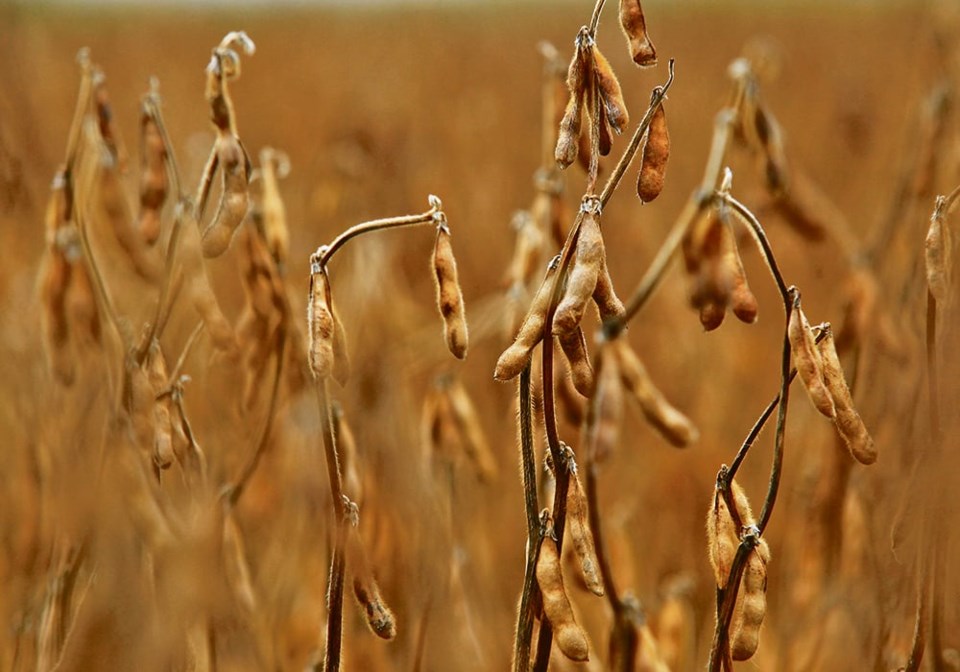SASKATOON — Todd Hultman is picking soybeans over corn in 2023-24.
“If you want to hang onto one of them, soybeans definitely have the better bullish potential,” he told farmers attending the 2023 DTN Virtual Ag Summit.
The United States Department of Agriculture is forecasting 245 million bushels of U.S. soybean ending stocks in 2023-24.
“The case for soybeans is much different than corn,” he said.
“We do not have a big endings stocks estimate.”
He is forecasting an average spot soybean price of US$13.50 per bushel for the year, with a range of $12 to $15.
Production costs for the crop are estimated at $12.30 per bu., so there should be plenty of opportunities for profit.
U.S. farmers harvested a record 15.23 billion bushels of corn and are expected to finish the year with a robust 2.13 billion bushels.
It reminds Hultman of the 2014 through 2020 era, when spot corn prices were in the $3 to $4.50 per bu. range.
“It is not remembered very fondly by a lot of our farmers because lots of times prices were below the cost of production,” he said.
Today’s production costs are about 28 percent higher than they were back then, so prices will also be higher.
He is forecasting a season average of $4.80 per bu., with a range of $4.25 to $5.50.
“That’s my best guess for now,” said Hultman.
Exporters shipped out 8.71 million tonnes of the crop as of Nov. 30, up 30 percent from a year ago.
Sales to Mexico have been particularly strong, which is a good thing because transportation to that market is not reliant on the Mississippi River or the Panama Canal, where low water levels are restricting trade.
However, corn prices in China have been falling, indicating a lack of urgency in demand in that market.
“I don’t think we’re going to have a situation like we did in 2020 when China comes up with huge, unexpected purchases,” he said.
Corn prices have been rising in Brazil, where markets are concerned about the hot and dry conditions in the centre of the country. The July futures price works out to about $6.19 per bu.
The USDA is forecasting 129 million tonnes of production in Brazil, but that might be on the high end unless the country receives ample rains in January and February.
Argentina is off to a “very good” start and is forecast to produce 55 million tonnes of the crop, a 62 percent increase over last year.
Soybean prices on China’s Dalian Exchange have been rising since May, with the 100-day average equal to $16.17 per bu.
That is despite huge imports from Brazil.
“To me, that’s a very strong sign of demand,” said Hultman.
Prices started to tail off recently, so the highs might be in for the Chinese market, depending on what happens with rainfall in Brazil for the January-February period.
He thinks now might be some of the best opportunities for U.S. soybean sales to that market, yet prices have not been climbing.
The U.S. exported 18.3 million tonnes of soybeans through Nov. 30, 13 percent below last year’s pace.
But sales to domestic crushers have been strong thanks to attractive crush margins. The January crush premium is hovering around $2.59 per bu., which is about double the normal level.
“It has been a very bullish source of new demand for the soybean market,” said Hultman.
The biofuel sector consumed 1.21 billion pounds of soybean oil in September, up 29 percent from a year ago, according to the U.S. Energy Information Administration.
Renewable diesel capacity was up 67 percent that same month and five more new plants are expected to be operational in 2024.
“This continues to be a market with a phenomenal growth story,” he said.
Hultman said his soybean price would be even more bullish if Brazil wasn’t looking at a possible record crop in 2024.
Contact [email protected]
SASKTODAY.ca is Saskatchewan's home page. Bookmark us at this link.




